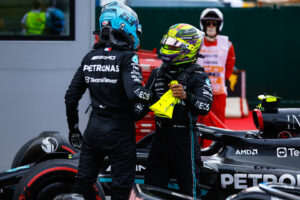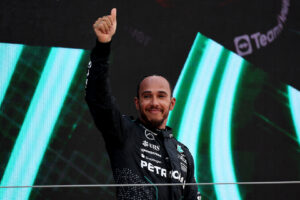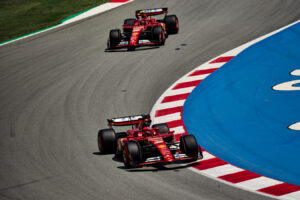Following the race at Phoenix, the horsepower discourse has continued, with teams and engine builders saying they can easily bring more power to the engines and NASCAR claiming cost and potential new manufacturers as to why horsepower has not increased.
With an improved but not great Phoenix race Sunday, the conversation has again come back to an increase in horsepower for the NASCAR Cup Series. Several key figures have come out and said high horsepower can return for the same price tag and relatively quickly. While NASCAR has continued to hold on to the same beliefs as in the past; keeping costs down and being attractive to a new manufacturer. One thing is clear though, this is the beginning of another NASCAR horsepower war.
“You’re going to have to ask Jim France that.” – Denny Hamlin on why #NASCAR hasn’t increased horsepower. pic.twitter.com/ighHR9B5JM
— Bryan Nolen (@TheBryanNolen) March 9, 2024
NASCAR holds firm on horsepower:
Following Sunday’s race at Phoenix, Brad Moran, managing director of the Cup Series spoke on SiriusXM NASCAR Radio. He said many of the same things we have heard from NASCAR in the past. On the tapered space, he said that all the manufacturers would have to agree upon its removal before that process could begin. With the increase in horsepower, you then face reliability and development cost issues.
Denny Hamlin has entered the conversation. As co-owner of 23XI Racing, he says the engine bills have been the same. Same price tag at 550 horsepower as it was when they would run 900 horsepower. The engine builders have even come out and rebutted against NASCAR’s comments. ECR Engines, who is one-half of the two engine builders for Chevrolet, has said reliability is not a concern as the engines can produce well over 900 reliably.
Moran brought up conversations with new manufacturers and that conversations could be affected by an increase in horsepower. “The number we’re at seems to be where we want to be to try to get potentially new manufacturers interested, if we start getting away from that number, it can create problems in that area”.
Kyle Larson speaks out about horsepower:
As a guest on the Monday episode of the Dale Jr. Download, Kyle Larson gave his comments about the horsepower dilemma which provided some valuable insight into the situation. Larson commented on the horsepower level as an attraction for new manufacturers, he said in his ten years in the Cup Series no new OEMs have joined. Scotty Maxim, the director of powertrains at Hendrick said they could have a thousand horsepower ready for next week. He continued saying engine builders at Hendrick Motorsports are taking the engine from his win at Las Vegas, turning the horsepower up to 1000, and putting it into one of Rick Hendrick’s personal cars.
Where does NASCAR go from here?
The horsepower question needs a direct answer from NASCAR management. If there is a new manufacturer on the way in, let the teams know and give that as a reason for the horsepower numbers. There are rumors about Honda becoming the fourth manufacturer, with an announcement this year. If true, I believe HRC has the tools to build engines with high horsepower and make them reliably.
The cost claim is false, with Hamlin’s comments. I believe the cost again is an attraction for new manufacturers. This begs the question, why does NASCAR keep chasing this fourth manufacturer instead of focusing on creating better racing for three OEMs now?
The fans want it, drivers want it, and engine builders say it can happen. Why are we trying to make the sport look more attractive to those on the outside when we have fans and drivers asking for changes that CAN be made but are not?
Fans are asking NASCAR, so let’s try one race with a higher horsepower motor, and give it a true fair try.






